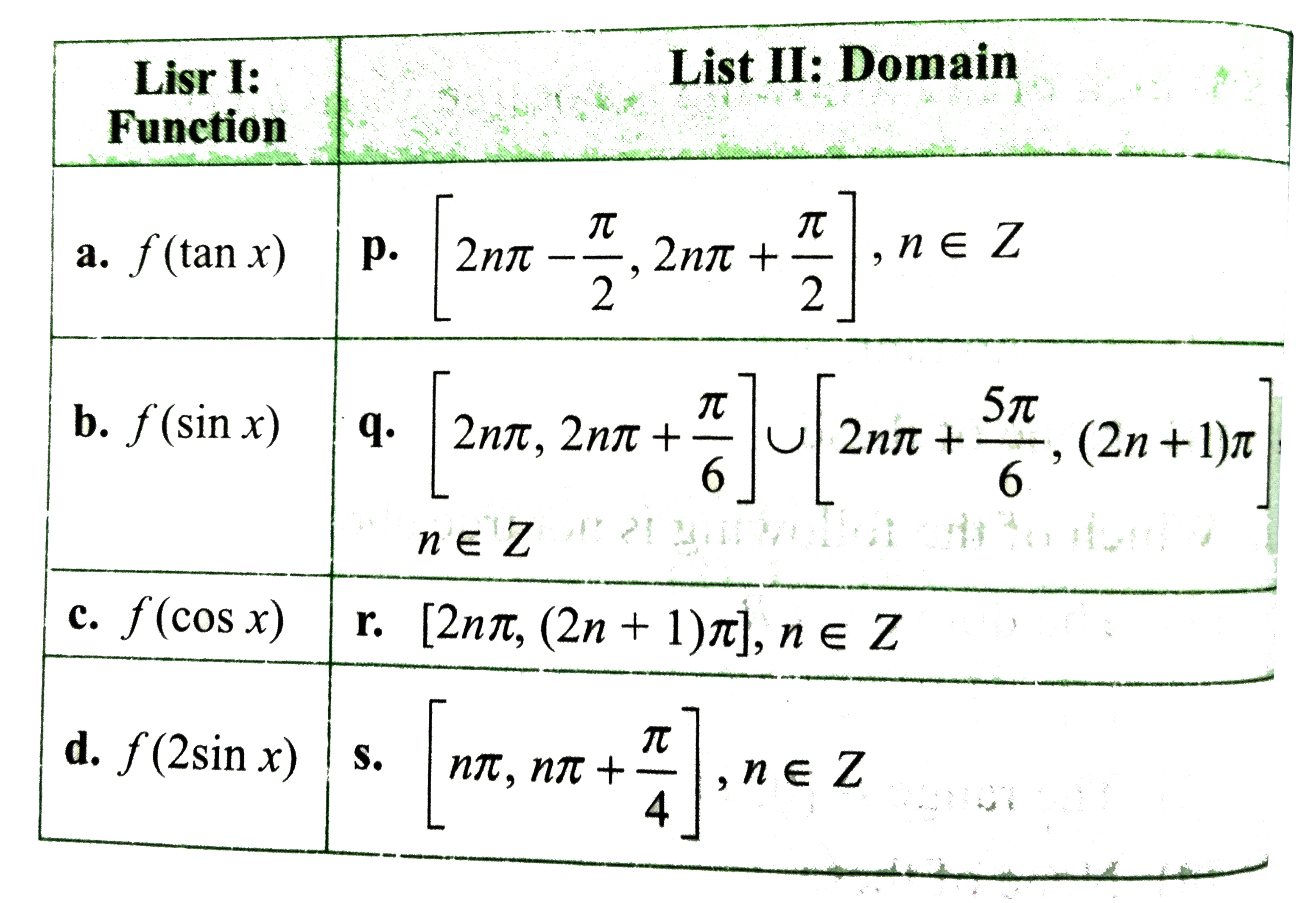If x=49 satisfies the equation (log)a(x2−x+2)>(log)a(−x2+2x+3), then the sum of all possible distinct values of [x] is (where[.] represetns the greatest integer function) ___Solution in Tamil
The correct Answer is:2
loga(x2−x+2)>loga(−x2+2x+3)
Putting x=49,loga(14281)>loga(29981)
∵14281<29981, we have 0<a<1
∴loga(x2−x+2)>loga(−x2+2x+3)
gives 0<x2−x+2<−x2+2x+3
orx2−x+2>0and2x2−3x−1<0
or3−√174<x<3+√174
Topper's Solved these Questions
- BOOK - CENGAGECHAPTER - RELATIONS AND FUNCTIONSEXERCISE - JEE Previous Year12videos
RELATIONS AND FUNCTIONS
- BOOK - CENGAGECHAPTER - RELATIONS AND FUNCTIONSEXERCISE - Exercise (Matrix)9videos
RELATIONS AND FUNCTIONS
- BOOK - CENGAGECHAPTER - Quadratic Equations, Inequalities, Modulus and LogarithmsEXERCISE - Question Bank28videos
Quadratic Equations, Inequalities, Modulus and Logarithms
- BOOK - CENGAGECHAPTER - SCALER TRIPLE PRODUCTS EXERCISE - DPP 2.311videos
SCALER TRIPLE PRODUCTS
Similar Questions
For real x, let f(x)=x3+5x+1 , then (1) f is oneone but not onto R (2) f is onto R but not oneone (3) f is oneone and onto R (4) f is neither oneone nor onto R
03:00View SolutionThe function f(x) is defined on the interval [0, 1]. Now, match the following lists:
 08:13View Solution
08:13View SolutionLet a,b,c,d be positive integers such that (log)ab=32and(log)cd=54. If (a−c)=9, then find the value of (b−d).
02:50View SolutionNumber of integral value(s) of λ for which vectors x2ˆi−ˆj+xˆk,(λ−1)ˆi−2λˆj+ˆk and ˆi−ˆj+ˆk, in the order from right-handed system ∀x ∈R, is
02:41View SolutionThe value of x satisfies the equation (1-2(log x^(2)))/(log x-2(log x)^(2))=1
05:02View SolutionIf x=49 satisfies the equation (log)a(x2−x+2)>(log)a(−x2+2x+3), then the sum of all possible distinct values of [x] is (where[.] represetns the greatest integer function) ___
03:37View SolutionEvaluate : (lim)x→2+ [x−2]log(x−2) , where [.] represents the greatest integer function.
07:02View SolutionDifferentiate the following functions with respect to x x34+acosecx−(log)ax
04:16View SolutionIf [.] denotes the greatest integer function then the domain of the real-valued function log[x+(1)/(2)]|x^(2)-x-2| is
06:26View SolutionFor 0<a≠1, find the number of ordered pair (x,y) satisfying the equation (log)a2|x+y|=12 and (log)ay−(log)a|x|=(log)a24
07:19View SolutionThe domain of function f(x)=log[x+12](2x2+x−1), where [.] denotes the greatest integer function is :
07:53View SolutionThe set of solution for all x satisfying the equation
xlog3x2+(log3x2−10)=1x2 is:06:38View SolutionIf x=49 satisfies the equation (log)a(x2−x+2)>(log)a(−x2+2x+3), then the sum of all possible distinct values of [x] is (where[.] represetns the greatest integer function) ___
03:08View SolutionSolve: 4(log)x2(√x)+2(log)4x(x2)=3(log)2x(x3).
11:17View Solutionसमीकरणो log2x−3logx=log(x2)−4 और log2(100x)+log2(10x)=14+log(1x)को एक साथ संतुष्ट करने वाले x के सभी संभावित मानो का योग ज्ञात कीजिये। [: लघुगणक का आधार 10 लीजिये। ]
06:53View SolutionThe domain of function f(x)=log[x+12](2x2+x−1), where [.] denotes the greatest integer function is :
02:55View Solution

